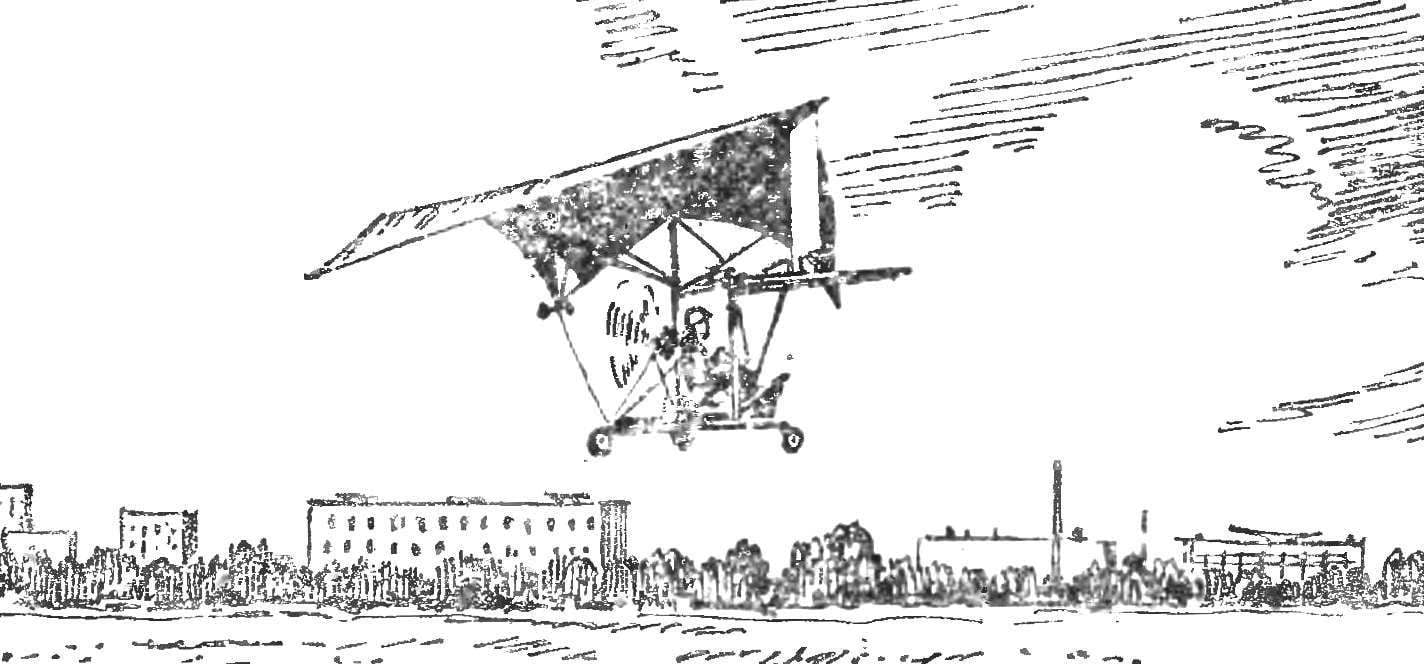 “If we turn the pages of aviation history, you will find that most modern aircraft as heavier than and lighter than air born motorless aircraft were gliders, airships — balloons. Motors came in the process of evolution. About the same we are seeing now in hang gliding: after the glider to a pure glider version began intensive work on its “motorization”. They were conducted in parallel, both Amateurs and serious scientific institutions, aircraft manufacturer. And got results that suggest that in the near future, the trikes will become an independent unit of the aircraft. This is evident, in particular, a recent flight on an ultra-light aircraft across the English channel from London to Paris, in the ways of the early aviation pioneers. At last year’s aviation show in Le Bourget has demonstrated the device “Metadata”, produced in Germany. The machine flew well. No doubt that experiments like performed by S. Belikova, deserve every poderina, first and foremost, the Federation of hang gliding sports of the USSR”.
“If we turn the pages of aviation history, you will find that most modern aircraft as heavier than and lighter than air born motorless aircraft were gliders, airships — balloons. Motors came in the process of evolution. About the same we are seeing now in hang gliding: after the glider to a pure glider version began intensive work on its “motorization”. They were conducted in parallel, both Amateurs and serious scientific institutions, aircraft manufacturer. And got results that suggest that in the near future, the trikes will become an independent unit of the aircraft. This is evident, in particular, a recent flight on an ultra-light aircraft across the English channel from London to Paris, in the ways of the early aviation pioneers. At last year’s aviation show in Le Bourget has demonstrated the device “Metadata”, produced in Germany. The machine flew well. No doubt that experiments like performed by S. Belikova, deserve every poderina, first and foremost, the Federation of hang gliding sports of the USSR”. ANTONOV General designer of aviation equipment
Before building the trikes we tried to collect and categorize technical data of all devices of this rear, created in the USSR and abroad. But the information was extremely scarce. Experience in the use of knapsack aerodigestive the gliders were not very suitable; the location of the propeller behind the athlete significantly reduces its efficiency compared to working in an open flow: the effects of the so-called “shading”. Because our creative team working at the youth club “Luch” of one of the Hoo capital, consisted mainly of boys who have graduated from the flying club, it was decided to build a spacecraft with aerodynamic control when placing the pilot in a sitting position. This implies the need to provide it with the landing gear.
To solve this task it was necessary to design a stiff platform of duralumin tubes, carrying the pylon mounting of the dome, the sub-frame, the pilot seat, landing gear, controls and a roll cage mount of rotation of the rudders and height. We knew that the installation on the glider rudders and ailerons, located on the traditional scheme of the aircraft directly on the dome, does not give positive results. This circumstance is explained by the reaction of soft wing (the so-called “reverse”) to change the position of the rudders in the stream. So we decided to push the handlebars forward in the area of undisturbed flow. The result is a machine resembling a plane of type “duck” (Fig. 1). Located under the front node of the triangular dome on the rudder with an area of 0.5 m2 and the front landing gear are controlled by foot pedals, steering wheel height with an area of 1.1 m2 — handle aircraft type. Wiring — cable, through the normal blocks on the rudder and through the Differential mechanism to the wheel height. For roll control, the rear edge of the canopy is lifted by bridles and perform functions of ailerons. The pilot’s seat light sports aircraft. It is equipped with seat belts with one belt and two shoulder straps covered with foam rubber to cushion during takeoff and landing.

